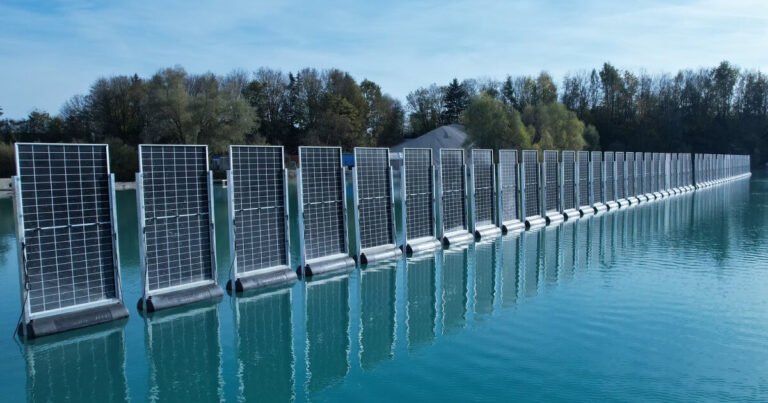10 Sustainable Ways to Heat Your Home — A Practical, Evidence-Based Guide
Heating our homes safely and affordably is one of the most personal ways we interact with energy and climate issues. This article walks through ten practical, sustainable heating approaches you can use alone or in combination — explained simply, supported with studies and household case studies, and ending with concrete steps you can take next.

In This Article
- Why Heating Matters Right Now
- 1. Air-source heat pumps (ASHPs): the most flexible low-carbon upgrade
- 2. Ground-source (geothermal) heat pumps: high efficiency, longer payback
- 3. Better insulation and air sealing (the “fabric-first” fix)
- 4. Solar thermal and solar + heat-pump hybrids
- 5. High-efficiency biomass (pellet) stoves — with caution
- 6. District heating and waste-heat networks (where available)
- 7. Smart controls, zoning, and thermostats (real energy savings, behaviour matters)
- 8. Low-temperature heating, like underfloor radiant systems
- 9. Micro-CHP and combined approaches (for specific cases)
- 10. Behaviour and low-cost fixes that add up fast
- A Compact Comparison Table (Quick Reference)
- Expert perspective
- Actionable Advice — What to Do Next (clear steps)
- Conclusion on Sources and Fairness
Why Heating Matters Right Now
Heating represents a large slice of household energy use in many countries and is a major contributor to building-sector emissions. According to the International Energy Agency (IEA), heat pumps and other efficient electric heating technologies could reduce global CO₂ emissions by hundreds of millions of tonnes by 2030 if scaled up.
At the same time, adoption is uneven: global heat pump sales dipped in recent years as households delayed big investments. The IEA reported that sales stalled in 2023 as consumers faced higher borrowing costs and economic uncertainty.
That gap — between what would be good for the planet and what’s practical for real families — is exactly why this guide focuses on a mix of low-cost, behaviour, retrofit and technology solutions that work now.
1. Air-source heat pumps (ASHPs): the most flexible low-carbon upgrade
What they are: ASHPs move heat from outside air into your home. They work even in cold climates (modern units perform much better than older models).
Why they help: When powered by low-carbon electricity, heat pumps greatly reduce fossil fuel use. According to monitoring studies, some ASHP installations have cut household energy consumption substantially — one field program observed modelled savings of around 45% for a house that previously relied on wood heat
Example: In a monitored pilot, several homeowners who swapped wood or oil systems for ASHPs reported noticeably lower bills and simpler maintenance. Installers who lived with ASHPs themselves during a UK pilot said the hands-on experience improved their confidence installing systems for customers..
Notes & downsides: Upfront cost can be high, and performance depends on correct sizing and good installation. Grants and installer training programs are expanding in many countries to reduce those barriers.

2. Ground-source (geothermal) heat pumps: high efficiency, longer payback
What they are: Pipes buried in the ground exchange heat with the earth (which stays at a stable temperature). Indoor heat pumps then distribute that heat.
Why they help: Ground-source systems are typically more efficient than https://www.energy.gov/energysaver/programmable-thermostatsair-source pumps and can cut space-heating energy use significantly. For example, a U.S. case study of an energy-efficient veteran’s home with a geothermal system reported roughly 30% energy savings compared with baseline expectations. The Medford (NY) veterans’ home combined geothermal with good insulation and a smart thermostat and achieved comfortable indoor temperatures with lower bills and fewer service calls.
Notes & downsides: Installation is more intrusive and costlier than ASHPs, so ground loops are best when there’s land available or in new builds.

3. Better insulation and air sealing (the “fabric-first” fix)
What it is: Adding insulation (loft, wall, floor), sealing gaps around doors and windows, and improving windows.
Why it helps: Insulation is often the most cost-effective way to reduce heating demand. The U.S. Department of Energy estimates homeowners can save up to ~20% on heating and cooling costs by air-sealing and adding insulation in attics, floors, and basements — a strong result across many home types.
Reality check: Several academic studies show that measured savings vary by household, and some retrofit effects shrink over time if occupants change their behaviour (the so-called rebound effect). Still, when done well and paired with supportive behavioural measures, insulation consistently reduces energy use and improves comfort.
Practical tip: Start by sealing draughts and insulating your attic or loft—these are often quick, low-disruption wins. Use a qualified assessor to prioritise measures for your home.

4. Solar thermal and solar + heat-pump hybrids
What it is: Solar thermal collectors capture sunlight to heat water (for hot water or space heating). Pairing PV (solar electricity) with an electric heat pump lets you run the heat pump on your own low-cost electricity when the sun is out.
Why it helps: Modern studies (and reviews of system designs) show that combining seasonal storage or short-term buffer tanks with heat pumps improves overall system reliability and reduces grid demand in winter. New research is exploring centralised seasonal storage plus local short-term storage to stretch the value of solar heat.
Notes & downsides: Solar thermal is site-sensitive (roof orientation, shading) and works best combined with other measures (insulation, controls). It’s a strong option in sunnier climates but can still cut fossil fuel use in temperate zones when paired with smart storage.
5. High-efficiency biomass (pellet) stoves — with caution
What it is: Modern pellet stoves burn compressed biomass (wood pellets) in a controlled, high-efficiency combustion chamber.
Why some people choose them: Pellet systems can use locally produced sustainable biomass and sometimes have lower operating costs than oil or electric heating in certain regions.
Health & emissions note: Recent research shows that even “improved” solid-fuel stoves can raise indoor particulate levels (PM₂.₅ and ultrafine particles), and that both fuel type and ventilation play a major role. This means pellet and wood stove use requires careful management and, in many areas, stricter emissions regulations. A 2025 study of UK homes found that residential wood burning can significantly increase indoor particulate exposure and pose health risks, especially in poorly ventilated spaces.
What to do if you use biomass: Use certified, low-emission pellet models, ensure good room ventilation, and evaluate local air-quality rules. Newer pellet-feeding mechanisms also reduce emissions in lab tests.

6. District heating and waste-heat networks (where available)
What it is: Centralised heat production (from CHP plants, waste-heat recovery, or large heat pumps) distributed to many buildings via insulated pipes.
Why it helps: District heating can be highly efficient when it uses industrial waste heat, municipal heat, or renewables. In some countries, district networks supply a meaningful share of heat demand. The IEA notes that district heating supplied a notable share of global heating needs, and that deployment and decarbonization vary by region.
Case study: Cities that capture waste heat from industry or electricity plants and route it into local networks can lower overall system emissions faster than piecemeal individual conversions.
Notes & downsides: It’s a community-scale option — great if you’re in a city with an existing network or a new development planned around one, but not a single-household solution in most suburbs.
7. Smart controls, zoning, and thermostats (real energy savings, behaviour matters)
What it is: Smart thermostats, zoned heating (different rooms on different schedules), and sensors that trim heating when no one is home.
Why it helps: Field studies show smart, learning thermostats can save around 8–12% on heating and cooling bills when used properly. ENERGY STAR and independent analyses back savings ranges in that area.
Example: In multiple pilot programs, occupants who used scheduled setbacks, room zoning and simple behavioural changes (closing curtains at night, lowering setpoint a few degrees) reported the biggest immediate savings — often more visible than some hardware swaps.
Practical tip: Pair a smart thermostat with zoning (e.g., thermostatic radiator valves or duct zoning) so you don’t heat empty rooms.
8. Low-temperature heating, like underfloor radiant systems
What it is: Radiant floors distribute heat at lower water temperatures than radiators, which pairs very well with heat pumps (which operate most efficiently at lower output temperatures).
Why it helps: Running a heat emitter at lower temperatures increases heat-pump efficiency (COP) and improves comfort via even floor-level warmth.
Notes: Installation is easier in new builds or during major renovations. Retrofitting radiant floors into an existing home is possible, but think through costs and disruption.
9. Micro-CHP and combined approaches (for specific cases)
What it is: Micro combined heat and power units generate heat and electricity together, sometimes using biofuels or gas.
Why it helps (select cases): In homes with consistent high heat demand or where electricity export is valued, micro-CHP can improve overall system efficiency. However, the carbon benefit depends on the fuel and local grid carbon intensity.
Notes & downsides: Not a universal solution — best evaluated with an energy professional and compared to a heat-pump pathway.
10. Behaviour and low-cost fixes that add up fast
What it is: Simple actions — drop your thermostat 1–2°C, wear warmer clothing indoors, use heavy curtains at night, bleed radiators, insulate hot-water tanks and pipes.
Why it helps: Even small habit changes deliver measurable savings. The U.S. Department of Energy estimates that lowering your thermostat 7–10°F for eight hours can save about 10% a year on heating and cooling energy.
Quick wins: Draught proofing, lowering your setpoint, and using a smart thermostat schedule. These are low or no-cost and worth doing before large investments.
A Compact Comparison Table (Quick Reference)
| Option | Typical carbon impact | Typical upfront cost* | Best for |
|---|---|---|---|
| Air-source heat pump | Large reduction when electricity is clean. | Medium to high | Most retrofit homes |
| Ground-source heat pump | Very high efficiency, lower running emissions | High | New builds / land available |
| Insulation & sealing | Immediate reduction in heating demand | Low to medium | All homes (first step) |
| Solar thermal / PV + heat pump | Reduces electricity use and peak loads | Medium | Sunny climates / owners with roof space |
| Pellet stove (modern) | Can reduce fossil fuel use but air quality concerns | Low–medium | Rural or off-grid with strict controls |
| District heating | Large potential if network low-carbon | Varies | Urban connected homes |
| Smart controls & zoning | Moderate, reliable savings | Low–medium | Homes with existing HVAC |
| Radiant (low-temp) | Efficient with heat pumps | Medium | Renovations/new builds |
| Micro-CHP | Depends on fuel | Medium | Specialised use cases |
| Behavior (setback, draughts) | Immediate small reductions | Very low | Everyone |
*Costs vary by country, house size and policy support. (Values are illustrative. See cited studies and local quotes for precise local figures.)
Expert perspective
- Energy system analysts and the IEA consistently say scaling heat pumps and improving building envelopes are core to cooling and heating decarbonization strategies. In short: technology plus insulation equals the biggest wins.
- Public health researchers warn that some low-cost “solutions” like old wood stoves carry health tradeoffs unless emissions are tightly controlled.
Actionable Advice — What to Do Next (clear steps)
- Do a low-cost audit at home. Walk through each room; look for drafts, exposed pipes, uninsulated loft hatch. Apply weather-strips, pipe insulation and a hot-water tank jacket. (Immediate savings.)
- Install a smart thermostat and use setbacks. It’s low-cost and typically pays back in a few years through bill savings.
- Insulate/air-seal priority areas. Loft and cavity/accessible walls first; check local grant programs to reduce cost.
- If your heating system is old, compare total costs: run a heat-pump quote (include installer’s commissioning fee) vs. replacing the boiler. Factor in expected fuel prices and available incentives. The IEA and national programs highlight strong long-term carbon and cost benefits for heat pumps in many regions.
- If you burn wood: consider switching to a certified low-emission appliance, improve ventilation, or move to a heat pump where feasible; check local air-quality rules.
Conclusion on Sources and Fairness
This article drew on recent peer-reviewed research, government case studies and energy-agency analysis to make practical recommendations that work in real homes. Key references include the International Energy Agency’s work on heat pumps and heating systems, U.S. Department of Energy case studies, national retrofit and efficiency reports, and peer-reviewed indoor-air studies on solid-fuel heating. (See inline citations after important claims.)







